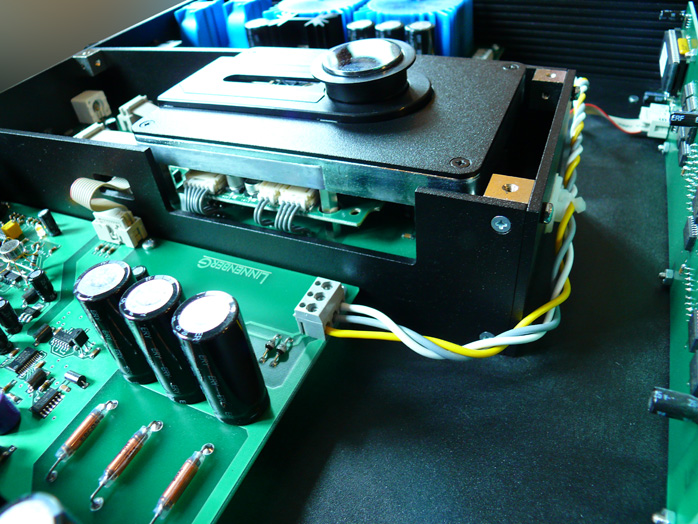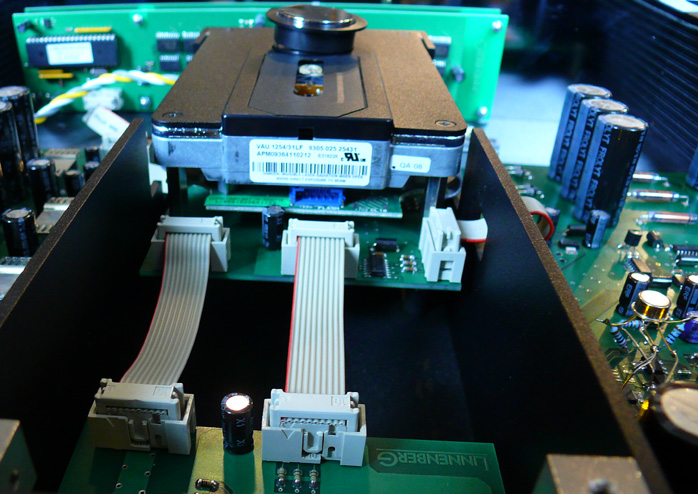This review page is supported in part by the sponsors whose ad banners are displayed below |
 |
 |
Like the amp2S, the cdp3E "lives in a sub division" to separate its signal-path circuitry from the power supply. That wording is rather flawed of course. Amplification circuits are "nothing but" modulated power supplies in the view of many experts but the point is still made. Ivo Linnenberg exploits stout internal bracing for shielding and stiffening purposes.
One again execution seems exceptionally tidy. Surprising for its substance is the rectangular sub enclosure around the Philips sled which runs beefy aluminum panels with massive corner posts.
The board for the dark blue and big display sits at quite a distance from the remainder.
|
|
|
 |
Once again yellow LEDs acts as constant-current sources and the signal path splits down the middle for a clean dual-mono layout.
|
 |
|
|
|
A ribbon cable connects CD-PRO2 to the mother board. The power supply gets to the mother board with a cleanly routed tied-off and twisted tri-conductor lead.
|
 |
Here we see the solitary 24/192 BurrBrown 1794A DAC chip with 127dB S/N ratio, the CS8416 input receiver and the fully passive I/V conversion stage. The 3ps crystal oscillator clock is encased in the silver block behind the bigger blue cap.
|
 |
The true 75-ohm BNC input is properly coupled with a pulse transformer to isolate the critical D/A conversion stage from outside interference by external sources.
|
 |
The Philips top-loading transport module is completely encased in a massive sub structure. Once again critical leads aren't simply soldered to the board but use screw terminals.
|
 |
|
|
|
These ribbon cables between the transport's control board and the display are as short as possible.
|
 |
Once again the power supply with Irish Talema trafos seems over-spec'd for the application.
|
 |
Finally some ten-legged critters who wear their heatsinks like sombreros.
|
 |
As the physical inspection showed, build and parts quality are very high, with a clear emphasis on beefy power supplies, clean layout and non-resonant mechanical construction. The external feature minimalism will strike some as extreme however. The on/off switches are on the back. In a rack, this makes them from hard to impossible to reach. Operation of the CDP relies on the preprogrammed All-In-One remote as the player lacks even a rudimentary manual play/pause/stop button. There is no time remaining display option nor are there scan, program and repeat modes. The display can't be dimmed or turned off either, not with Linnenberg's remote, not with remotes which control the same Philips transport in other players like my Ancient Audio Lektor Prime (though the basic functions do work with them exactly as they do with Linnenberg's own wand). If the integrated amp's control logic happens to be set to the right input, it can be operated without the remote but input switching does requires the wand again. The obvious motto is, don't lose or misplace that remote. How would that sit in practice?
|
 |
  |
 |